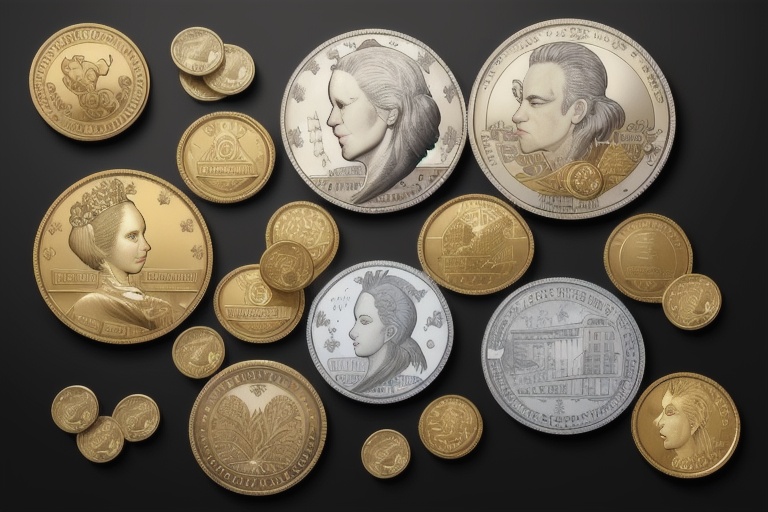Coin collecting, an endeavor that captivates enthusiasts worldwide, involves meticulous examination of coins for any signs of wear or uniqueness. For the devoted numismatist, the coin microscope has become an invaluable instrument, providing the capability to inspect a coin's minutiae that would otherwise be invisible to the unaided eye. This article will delve into the practicality of utilizing a coin microscope, its advantages, and a selection of recommended microscopes suitable for various collector needs and preferences.
Coin collecting, an endeavor that captivates enthusiasts worldwide, involves meticulous examination of coins for any signs of wear or uniqueness. For the devoted numismatist, the coin microscope has become an invaluable instrument, providing the capability to inspect a coin's minutiae that would otherwise be invisible to the unaided eye. This article will delve into the practicality of utilizing a coin microscope, its advantages, and a selection of recommended microscopes suitable for various collector needs and preferences.
The Utility of Coin Microscopes
The coin microscope brings several advantages to numismatics. Collectors can scrutinize their coins for traces of cleaning agents or tiny strands lodged within crevices, which is especially pertinent for ancient bronze coins concealing minuscule pockets of lead only discernible under significant magnification. Identifying fine red fibers can suggest a coin's storage history, indicating a previous resting place within a flocked tray.
Authenticity evaluation is another scenario where the coin microscope shines. The presence of seams and file marks along a coin's edge can be indicative of its legitimacy, as authentic coins often bear unique file marks that are cumbersome to counterfeit precisely. In contrast, random abrasions may result from regular circulation, whereas patterned scratches can hint at intrusive cleaning methods, whether from a buffer wheel or manual efforts.
Magnification and Field of View
As magnification intensifies, the observable area through the microscope, known as the field of view, diminishes. Hence, choosing a microscope with suitable magnification is paramount for coin collectors; a magnification between 10x and 30x usually constitutes a well-balanced choice, offering detailed scrutiny while maintaining a comprehensive perspective of the entire coin.
Top Recommended Coin Microscopes
The S2-TPD Digital Stereo Microscope
For the modern collector, the S2-TPD Digital Stereo Microscope pairs 10x and 30x magnification capabilities with a digital camera, allowing for the capture and archival of coin images—a feature greatly useful for documentation and sharing purposes. With an LED ring light and software included, it provides excellent contrast with its black/white stage plate and camera options of 3mp or 5mp.
The S2-BL Coin Stereo Microscope
For those seeking reliability without added complexity, the S2-BL Coin Stereo Microscope is a stellar choice, offering 10x and 30x magnification with an LED ring light to illuminate coins evenly. Its black/white stage plate ensures maximum contrast for all types of coin surfaces.
The MW2-L1 Dual Power Stereo Microscope
Collectors favoring versatility might gravitate towards the MW2-L1 Dual Power Stereo Microscope, which grants a choice in magnification through the selection of different eyepieces and objective lenses. It features both top and bottom illumination and includes glass and black/white stage plates for superior coin contrast, with common magnifications being 5x & 15x or 10x & 30x.
The MW3-L9 Zoom Stereo Microscope
Continuous magnification adjustments are possible with the MW3-L9 Zoom Stereo Microscope, supporting a range of 10x-30x magnification, which can extend to 15x-45x with additional eyepieces. Its built-in illumination and stage plates make it a versatile tool suitable for varying examination needs.
The S6-RLT Zoom Stereo Microscope
Lastly, the S6-RLT Zoom Stereo Microscope claims a wide magnification span of 7x to 45x, embedded with top and bottom LED illumination for optimal viewing. With this microscope, collectors can effortlessly zoom to evaluate an entire coin or focus closely on particular details.
Conclusion
The role of the coin microscope in the numismatic realm cannot be overstated; it is an indispensable tool for any serious collector. These devices empower enthusiasts to reveal hidden characteristics of their coins, to investigate nuances pertaining to a coin's authenticity and condition, and to discern the nuances distinguishing a valued coin from the ordinary.
For collectors, the choice of microscope is crucial; it should align with their specific needs, whether they prefer fixed magnification, the option to switch between different magnifications, or the flexibility of a zoom function. Options such as the S2-TPD Digital Stereo Microscope and the S2-BL Coin Stereo Microscope cater to those seeking digital capabilities or simplicity, respectively, while the MW2-L1, MW3-L9, and S6-RLT models offer varying levels of versatility and precision.
Coin collecting is not merely about having an array of coins; it is about understanding and appreciating each coin's story as told through its minute details. A well-chosen coin microscope can be the key to unlocking those stories and enhancing the overall numismatic experience.
Information for this article was gathered from the following source.

